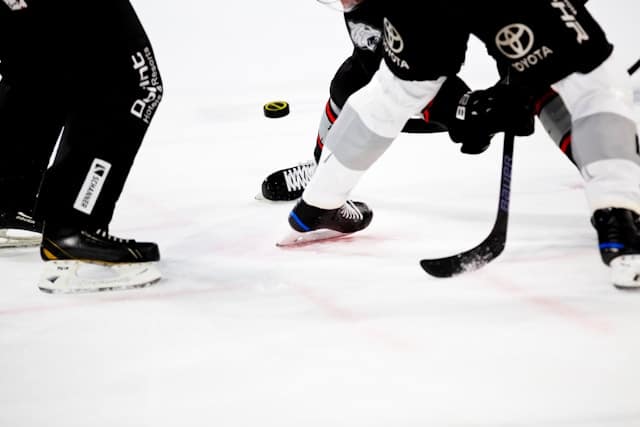In the high-speed, high-stakes arena of competitive sports, the slightest edge can make a world of difference. For hockey goalkeepers, the ability to rapidly and accurately track the puck can be the difference between a game-winning save and a heartbreaking defeat. In recent years, sports science has begun to harness the power of technology to better understand and enhance visual tracking skills. Enhanced visual tracking systems are now being seen as a crucial tool in training hockey goalkeepers to improve their game. Let’s delve into how these systems work, why they’re so important for hockey, and the evidence supporting their use.
The Importance of Visual Tracking in Hockey
To fully appreciate the influence of visual tracking systems in hockey, we need to discuss the importance of vision in this sport. The game of hockey is a fast-paced, dynamic sport where things can change in an instant. The puck can travel at incredible speeds, often in excess of 100 miles per hour. For goalkeepers, the challenge is not just about being in the right place at the right time, but also anticipating where the puck is going to be.
Lire également : How to Optimize Tactical Planning for Team Sports in Variably Sized Arenas?
Visual tracking is a cognitive skill that involves the eye’s ability to rapidly, smoothly, and accurately follow a moving object. In the context of hockey, this means the ability to follow the puck as it moves across the ice. This is a crucial skill for goalkeepers, who must constantly monitor the position and trajectory of the puck in order to predict and respond to shots on goal.
The Role of Enhanced Visual Tracking Systems
Enhanced visual tracking systems are specialized technologies designed to improve the visual tracking skills of athletes. These systems use high-speed cameras and advanced software algorithms to provide real-time feedback and analysis of an athlete’s visual tracking abilities.
Avez-vous vu cela : What Are the Technological Advances in Swimwear That Reduce Drag and Improve Speed?
During training sessions, these systems can record and analyze every detail of a goalkeeper’s visual tracking process, including where they are looking, how quickly they are moving their eyes, and how accurately they are following the puck. This data can then be used to create personalized training programs to improve the goalkeeper’s visual tracking abilities.
Additionally, these systems can also be used in a game setting to provide real-time feedback, allowing coaches and players to make immediate adjustments to their strategies and techniques.
The Evidence: Studies on Visual Tracking and Sports Performance
A number of studies have been conducted to investigate the relationship between visual tracking skills and sports performance. These studies have consistently found a significant correlation between the two.
For example, a study published in the PubMed database found that professional baseball players had significantly better visual tracking skills than non-athletes. Another study, available on PMC and indexed by DOI, found that football players with better visual tracking skills were more successful at intercepting passes.
In the specific context of hockey, one study assessed the visual tracking skills of elite goaltenders and forwards. The results, published in the Journal of Sports Sciences, revealed that the goalkeepers had superior visual tracking skills. Furthermore, their skills were found to be directly related to their on-ice performance.
Implementation in Hockey Training
With the evidence supporting the importance of visual tracking in sports performance, many sports scientists, trainers, and coaches are now exploring ways to incorporate visual tracking training into their routines. For hockey goalkeepers, this involves using enhanced visual tracking systems during both training and games.
During training, these systems can be used to identify weaknesses in a goalkeeper’s visual tracking abilities and develop personalized training programs to address these areas. This could involve drills designed to improve the speed and accuracy of eye movements, or cognitive exercises to enhance the ability to anticipate the trajectory of the puck.
In the game setting, real-time feedback from these systems can be used to make immediate tactical adjustments. For example, if a goalkeeper is consistently failing to track the puck accurately, the coach could adjust their positioning or technique to compensate for this.
A Game-Changer for Hockey Goalkeepers
Enhanced visual tracking systems have the potential to revolutionize the way hockey goalkeepers train and perform. By providing a detailed, data-driven understanding of the visual tracking process, these systems can help goalkeepers to hone their skills, make quicker and more accurate decisions, and ultimately, improve their performance on the ice. This could be a game-changer for the sport of hockey, and for the goalkeepers who are always striving to be at the top of their game.
The Effectiveness of Visual Training Programs
The importance of a well-planned and designed visual training program for hockey players, especially goalkeepers, cannot be overstated. As established in previous sections, visual tracking skills play an integral role in enhancing a player’s performance on the ice, making the need for effective and sport-specific visual training paramount.
A study available on Google Scholar and indexed by DOI highlighted the significance of vision training in improving a goalkeeper’s response to high-speed pucks. The study emphasized the importance of developing dynamic visual acuity, which is the ability to keep a moving object in focus. This is particularly relevant for a sport like hockey, where the puck travels at incredible speeds and often changes direction unpredictably.
In addition to enhancing dynamic visual acuity, a comprehensive visual training program should also address other vital visual skills. Peripheral vision, for instance, is crucial for a goalkeeper to keep an eye on the players around him while focusing on the puck. Similarly, improving eye movements can significantly enhance a goalkeeper’s visual tracking abilities.
Moreover, effective visual training also includes drills for improving reaction time and decision making, both of which are vital for a goalkeeper’s success. Eye tracking exercises are often incorporated into these training programs, using enhanced visual tracking systems for accurate assessment and feedback.
The Future of Goalkeeping Training in Hockey
The field of sports science is continuously evolving, and the uptake of technology is at the forefront of this evolution. The use of enhanced visual tracking systems in hockey training is just one example of how technology is transforming the way players train and perform.
These systems have proven to be a significant addition to the goalkeeper’s training arsenal. They offer an unprecedented level of detail in capturing and analyzing the goalkeeper’s visual tracking process. This data-driven approach allows for the creation of personalized training programs that address the specific needs and weaknesses of each goalkeeper.
While the technology is still relatively new, the potential benefits are considerable. From improving visual acuity to enhancing reaction time, the use of these systems could significantly improve a goalkeeper’s performance. Based on the evidence from existing research studies and the successful implementation of these systems in training routines, it’s clear that they will play an even larger role in the future of hockey training.
In conclusion, the advent of enhanced visual tracking systems is a game-changer in the sport of hockey. These systems provide an objective, data-driven approach to improving a goalkeeper’s visual tracking skills. As our understanding of the crucial role vision plays in sports performance deepens, so too will the utilization of these systems in training programs. For hockey goalkeepers, this means a future of training that is more targeted, more effective, and ultimately, more successful. The era of technology-enhanced sports training is here, and it’s set to revolutionize the way we understand and enhance performance in hockey and beyond.











